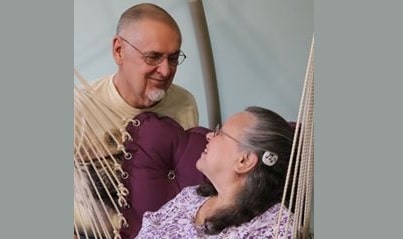Vestibular Specialists know a few things.
 We know that when a patient complains of “dizziness” they could be referring to vertigo, lightheadedness, imbalance, fear of falling, blurred vision or disorientation. We know that these are different complaints with different possible causes, requiring different examinations and different treatments. We know patients often have a hard time describing their symptoms.
We know that when a patient complains of “dizziness” they could be referring to vertigo, lightheadedness, imbalance, fear of falling, blurred vision or disorientation. We know that these are different complaints with different possible causes, requiring different examinations and different treatments. We know patients often have a hard time describing their symptoms.
We know that BPPV is the most common inner ear disorder, and that the Dix-Hallpike test can confirm the condition and identify the affected side. We know Canalith Reposition (AKA the Epley maneuver) is over 90% effective in resolving the most common version of BPPV which affects the posterior canal. We know that BPPV can and does occur in the other canals as well. We know meclizine is contra-indicated and that Brandt-Daroff exercises are far less effective than the Epley maneuver in treating BPPV.
We know that imaging has a very low yield in identifying the cause of dizziness or vertigo, and that a simple eye movement exam (HINTS) is far more effective than imaging at identifying a possible stroke patient.
We know that vestibular migraine occurs far more often than Meniere’s disease, and Meniere’s patients can almost always tell you which ear is affected if you ask.
We know that high fall risk patients typically have at least a few risk factors that contribute to falling, and many of the factors are treatable or modifiable.
Here’s the problem: A lot of health care practitioners seeing dizzy patients don’t know these things.
Over the years, I have been working on developing tools that front line practitioners can use to more effectively diagnose and treat dizziness. These tools have been compiled in the Practitioner’s Guide to the Dizzy Patient, which is available free to download. This started as a training tool I wrote for Micromedical Technologies and evolved into its current format which we use for training at my current home, Wake Forest University School of Medicine. Click on the link for a downloadable, printable PDF.
One issue is that dizziness and imbalance have been described as an inevitable geriatric syndrome with little effort spent to obtain more specifics about the complaint. Page 3 of the guide lists typical responses to the question “What do you mean by dizzy?” and the disorders with which they are most commonly associated.
On pages 14 and 15, you will find a Short Form Questionnaire which lists a one sentence description of the most common causes of dizziness or vertigo. The patient is asked to choose the ONE description that fits their complaint best, with an associated guide directing the examiner to more related information. We have found this form to be 60 to 70% predictive of final diagnosis depending on practice setting.
Both of the above pages direct the reader to a Practitioner Review page, and a Patient Handout page for each commonly encountered disorder.
The Practitioner Review page covers defining questions (and the expected answer if you are on the right page), as well as a description/definition of the condition and some management suggestions. The Patient Handout page is written in layman’s terms to aid in counseling.
On pages 6 and 7 you will find checklists for both episodic and acute vertigo, with page 8 discussing the HINTS protocol for diagnosing acute vertigo. Pages 36 and 37 include instructions on how to perform the Epley maneuver, with an explanation and follow up instructions for the patient.
Practitioner’s Guide to Dizzy Patient – Free Download
Please feel free to download and copy the guide (as many as you would like) here: Practitioner’s Guide to the Dizzy Patient. In my private practice, I would deliver them to local primary care doctors. Educating the public and referring physicians, and getting results, are the keys to success. Hopefully, this guide can make the process easier.
If you download it, please give me some feedback in the comments section as I expect it will continue to evolve. Tell me what you liked, didn’t like, will use, won’t use, agree with, disagree with. It’s all helpful.









I am so happy I stumbled on this website on the same day as it is shared online. I am an Occupational Therapist who not only deals with patients with numerous vestibular issues but have personally suffered with BBPV on and off for 17 years. My audiology colleague believes I also have otolith dysfunction. I can’t wait to see what I can learn and hopefully apply to help patients and me! So timely!